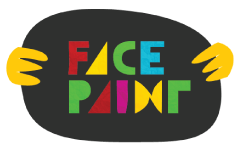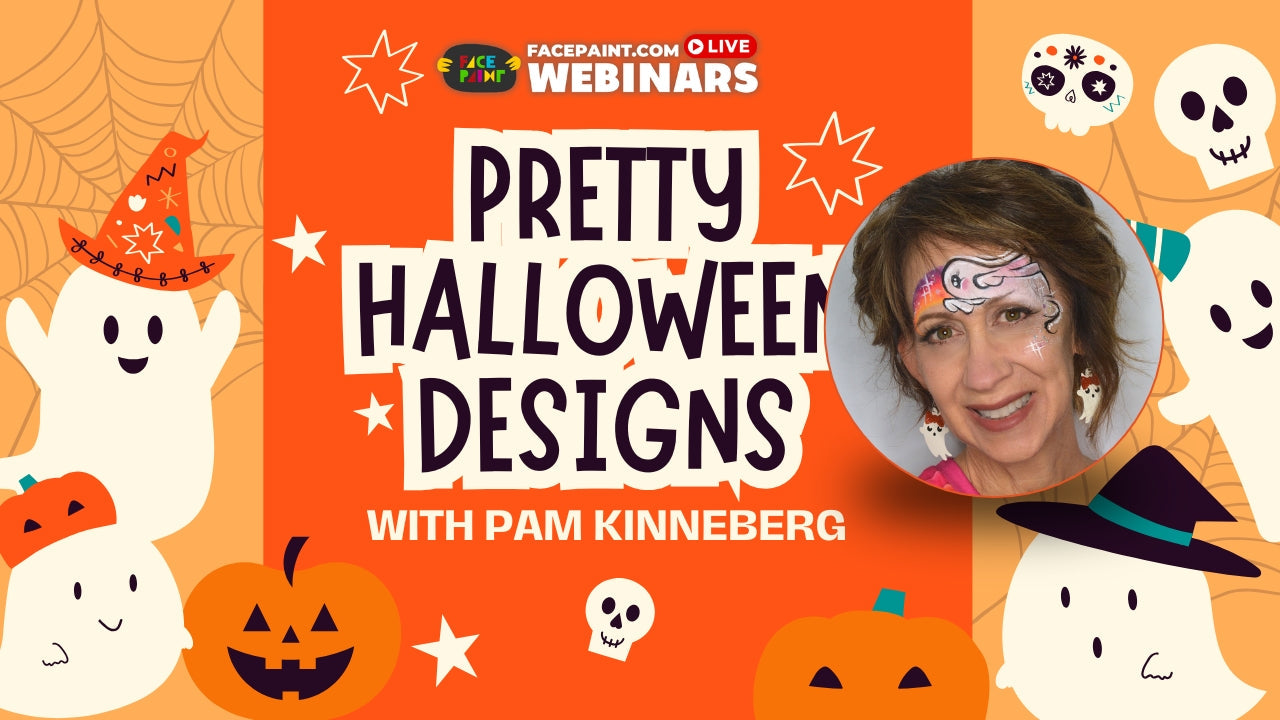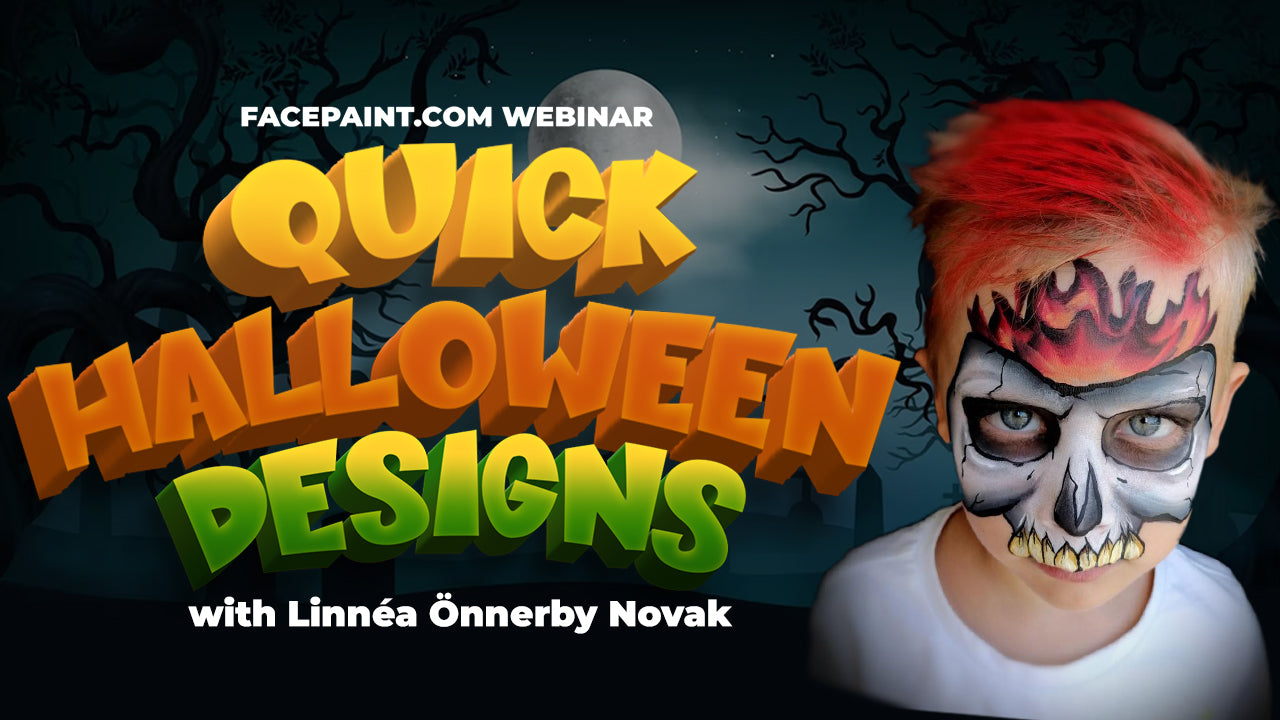Summer is here, and the trees are in full bloom–great for a game of hide-and-seek! This super simple mask design uses only three basic colors: white, green, and red or black.
What I used:
- Wolfe white (but one of these alternatives will work great, too!)
- TAG green
- DiamondFX black
- DiamondFX red (optional)
- A large and a small round brush
As you’ll see in the photo above, I used three types of green, which we’ll achieve by mixing. Adding white to a color is called a “tint,” adding black is called a “shade” (but don’t be confused–a lighter or darker version of a color may also be referred to as a shade), and an original color is called a “hue.” Take your green cake and designate three even segments for mixing to keep your colors pure, and swatch on your wrist to test colors.
For your light green load your large round brush with white and green, and alternate cakes until your color is smooth and consistent. To keep things simple, I’ll stick with this minty green, but you can warm up your colors by adding a touch of yellow.
For your darker green, do the same with green and black. Most black paints have thicker pigment than whites, so you’ll only need a little. Low on black? Mix green and red for a rich, pure black.
Once you’re comfortable with your colors, start outlining the splotches on your mask with your small round brush and white paint. This isn’t absolutely necessary, but it can help you plan your color placement and keep your segments looking clean. Make the shapes irregular, but skew them slightly horizontally if you can.
Start filling in some of the segments with your lightest shade of green. As a general rule, it’s usually a good idea to put down your lightest colors first, because the darker the color, the more pigmented your paint is likely to be. Try to keep your segments of the same color from touching each other.
Follow the same procedure with your darker shades.
In the case that you’re left with a few blank segments, have no fear! You can definitely fill these in later.
If you and your model are comfortable with this, or if you’re your own model, fill in the region around the eyes with your darker shade. This isn’t super important, but I liked how it seemed to incorporate the shapes of my eyes in the pattern.
If you like, you can outline the edges of your mask with a dark color using your small round brush.
You’re done! This look is easy, fast, and flexible, and can be great for birthday parties or games of paintball for an added challenge.



















